TEXT AND PHOTOGRAPHS BY EMAN OMAR
Lahore, Pakistan
When my father, Sardar Kamil Omar was just a boy; long before hunting was fun, equestrian sports got interesting and the internet was everyone’s main source of information, he collected stamps.
As a child who began attending boarding school at the age of seven, with parents who pursued their wanderlust and relatives scattered all over the world, Baba’s mailbox was never empty. A letter a day, from his relations, was the norm, and from that point on, the brilliantly animated, distinctively shaped and vibrantly coloured, tiny sheets of paper, that embossed his mail, were enough to besot a young boarder of humble ambitions.
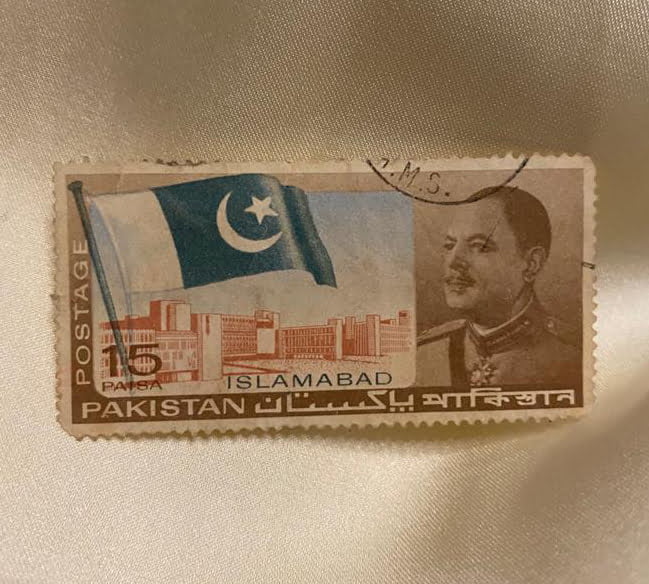
Seated on the muted sofa of our living room, Baba picks up one of the leather-bound albums and begins to flip through the pages. The typical page of paper my father stuck his stamps on, is like drywall in a dream; or a wall of windows whose portals look upon a world of incongruous parts; a Taj Mahal here, two athletes knotted in the corner, some queen ennobling this and that. I felt as if I were gazing at a pantheon of history’s greatest leaders, all in fantastic outfits, each with a story to tell. There was Turkey’s Mustafa Kemal Atatürk, clad in a crisp business suit, with no foreseeable difference in appearance compared to other great European or American leaders; accomplishing that secular image for Turkey, he devoted his life to building. Or a proud Ayub Khan, in a Field Marshal’s uniform flaunting his medals, with a look that seems deeply aware of his achievement as Pakistan’s first ever army general turned President after a successful coup d’état. The modern buildings of Islamabad surrounding him, indicating how the capital city of Pakistan changed to Islamabad in August 1967, under his command. The word Pakistan appears in English, Urdu and Bengali appears in reverse in the lower panel.
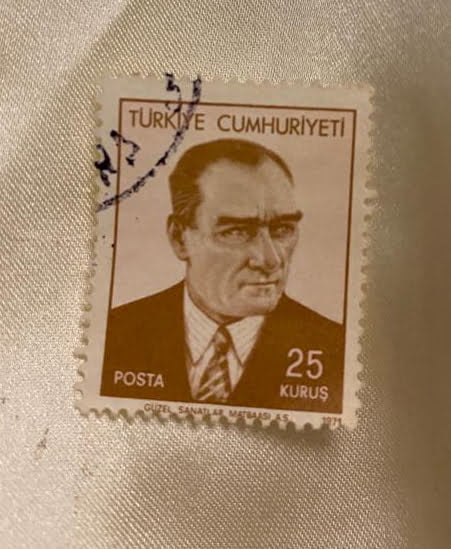
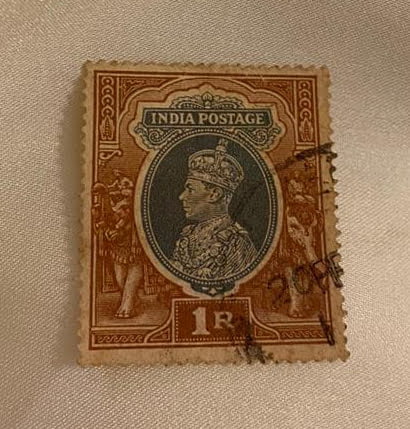
Baba collected stamps at a time when letter writing was not only the main source of communication, but at a time when it was all the rage and a highly popular art form. Thus, engendering material culture as a useful venue to understand not only our likes dislikes and desires, but a gateway to comprehend the cultures and behaviours of our past.
It was only in 1968, at age 11, when my father began arranging the tiny sheetlets, he amassed, into the leather-bound albums that have now been passed on to me. The first-ever stamp collection he recalls, is that of his paternal grandfather’s: Sardar Habibullah. The barrister turned politician, had a cluttered cache of stamps that inhabited a Romeo and Juliet cigar box, tucked somewhere in the sprawling library of his Lahore home on Habibullah Road. Once he discovered that his favourite grandson, who was referred to as ‘Munna’ with endearment, developed a proclivity for stamp collecting, he retrieved that cigar box with all its contents and passed it onto a youthful, overly keen and a very excited ‘Munna’. After rapturously welcoming his grandfather’s collection into his own, his stamps, as Baba puts it, became his world. He would spend hours on end, under the flickering yellow of a candle, studying and organising the fluorescently pigmented, glossy sheets of printed paper into his very own compendium of stamps, on the upper bunk of his boarding house.
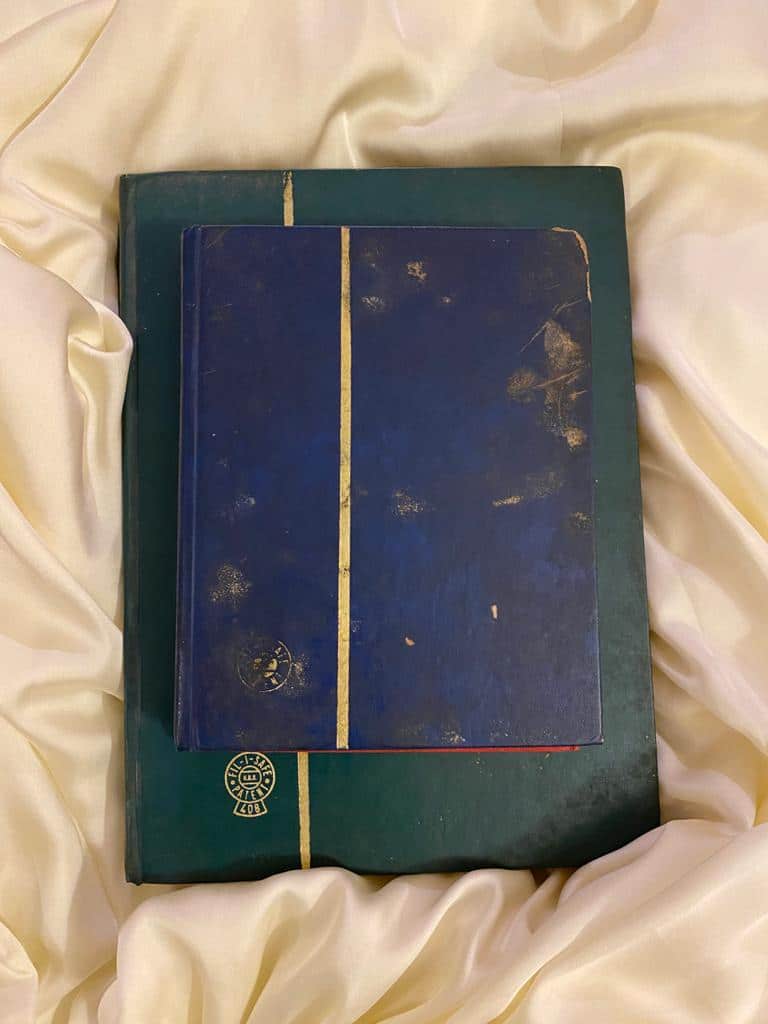
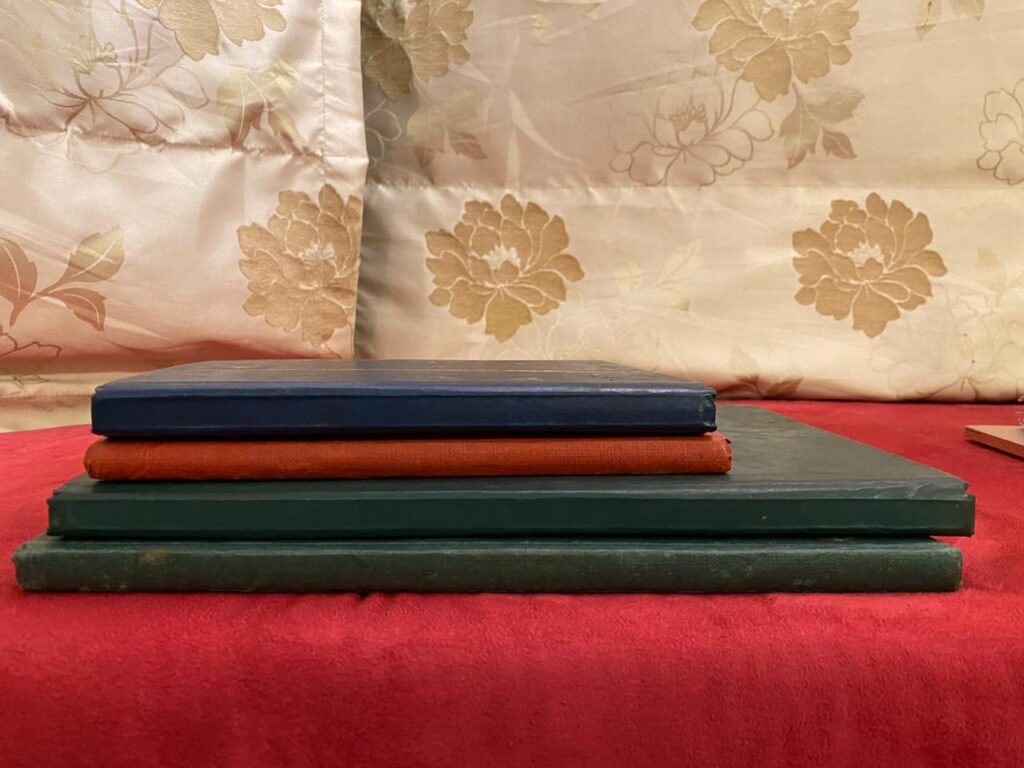
Perhaps the most remarkable stamp my father inherited from his grandfather was the ‘Penny Black’; the world’s first-ever adhesive postage stamp, issued by Great Britain in 1840. A dull, black and white stamp, depicting a young Queen Victoria with the words ‘One Penny’ designated at the bottom, is now one of the world’s most covetable artefacts. Baba theorises that his grandfather must have purchased it in London on holiday in the 19th century. However, due to a neglectful attitude and a catastrophic thunderstorm that caused the roof of my great grandfather’s store room to collapse, the Penny Black, along with a series of other collectibles was damaged. This is why, as you can see, it has been delicately glued to another piece of paper for preservation purposes.
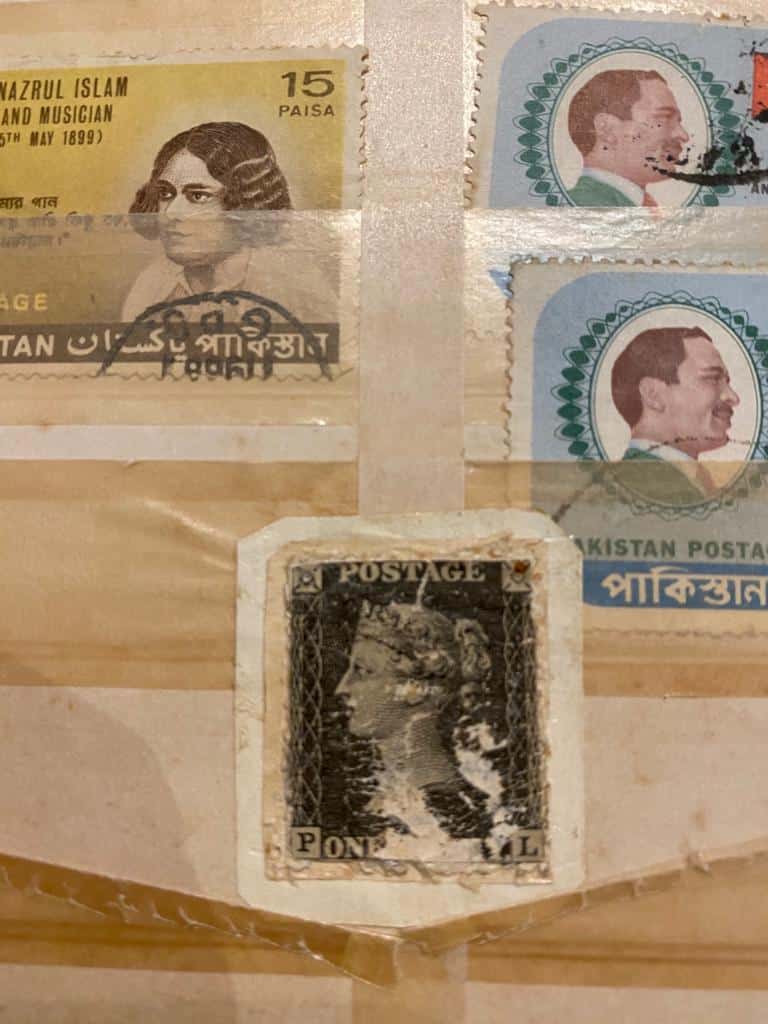
A grand proportion of my father’s stamp collection comprised of stamps that he found and collected himself. By 1972, he had a collected over 6,000 stamps that were distributed evenly in eight albums. He surrounded himself with a cult of juvenile philatelists and would often be seen in a circular seating arrangement in the endless, emerald grounds of Aitchison College in Lahore, exchanging stamps with his his peers. Some of his choices were ostensibly lacklustre and matter-of-fact looking, but most choices were variegated, inconsistently shaped and caricatured, matching the mindset of the collector.
As I flip through the stiff album pages, I am comforted by one thought: unlike the television or the radio, they wouldn’t just put anyone on a stamp. The portraits of the great men and women that these stamps so feature, represent a corner of our civic society that retraces and reverberates our social and political histories. In a world, characterised by crises that seem not so much to pile up as to bleed into each other, the beguiling thing about stamp collections is that they exhibit an idyllic global village, where portraits of warring leaders with competing ideologies live side-by-side. As is the case with Pakistan’s Quaid-e-Azam, Muhammad Ali Jinnah and India’s Gandhi or USSR’s Lenin and USA’s Woodrow Wilson, thereby, for once, pushing the eccentricities and motivations of these political figures to the side.
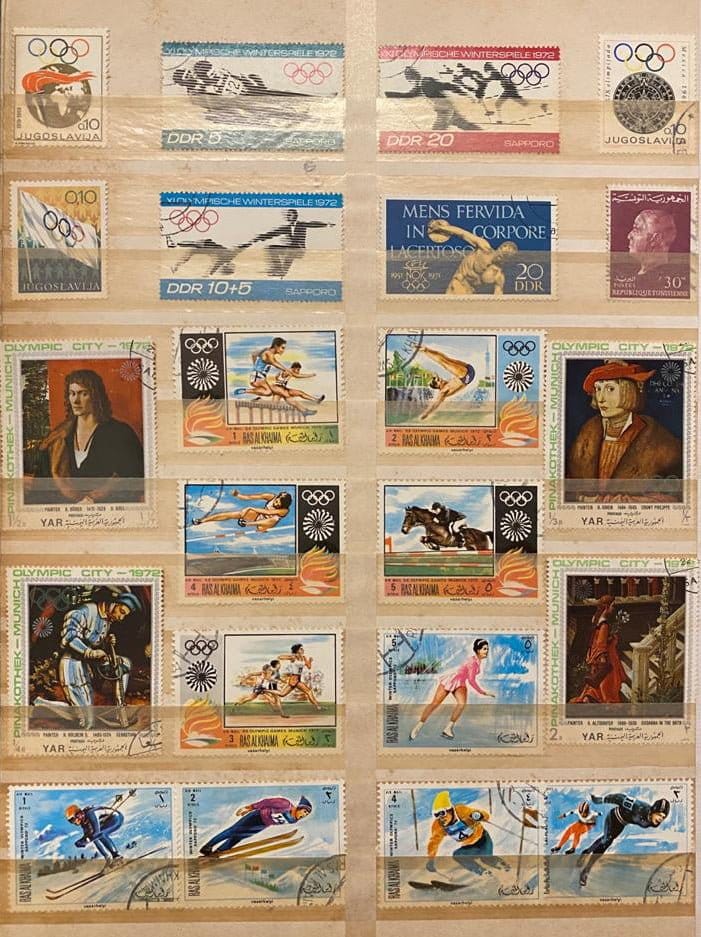
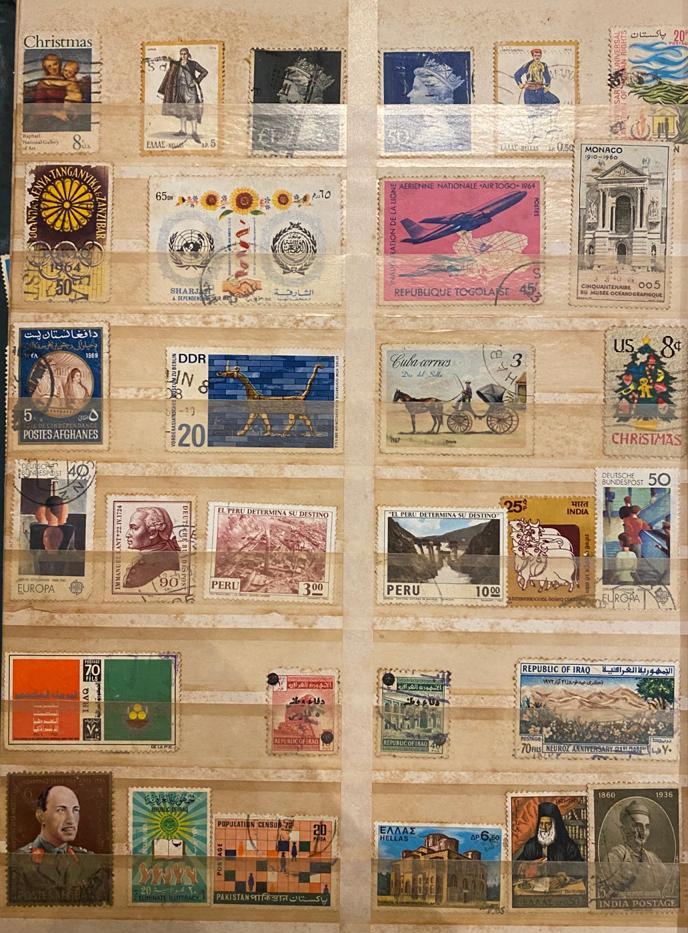
Philately, in the milieu of material culture, opens portals for the exploration of our syncretic past. It creates room for just about anyone to test their historical knowledge on just about anything. Before my affiliation with my father’s stamps, I hadn’t the slightest clue that Helvetia was just a fancy name for Switzerland, or that Hungary, in fact was a country with two names; the second one being Magyar, evidenced by ‘MAGYAR POSTA’ printed on all its postage. Even miniscule details of international history, such as changes to International Children’s Day from 5 October to 20 November could be traced. One of the albums also feature commemoratives from the Olympics. The most prominent ones being those of the 1972 Munich Olympics, owing to the Munich Massacre that resulted in nine members of the Israeli Olympic team being held hostage by a Palestinian terrorist group, to avenge the injustices inflicted by the Israeli state on the Palestinian populace.

Baba’s philatelic journey doesn’t end with his grandfather’s Romeo and Juliet cigar box or in the far-stretching fields of Aitchison College. In fact, the stories of his finest stamps, involve interactions with his friends across the border. Summer holidays for him and his brothers meant train travel from Lahore to Delhi; from one great Mughal city to another, for a two-month stay with their maternal family. Upon arriving, my father’s child-like impulses would direct him to a nearby ‘Langar’: a community kitchen in a Sikh temple, which would offer free meals to everyone regardless of religion, caste, class or ethnicity. At the langar he befriended boys often sporting patkas (turbans), who, like him, collected stamps too. The trade of stamps was far less simple at the Langar than at Aitchison College. Often one had to sacrifice their dessert along with a stamp or two to ultimately have that one stamp, they so coveted, to their name.
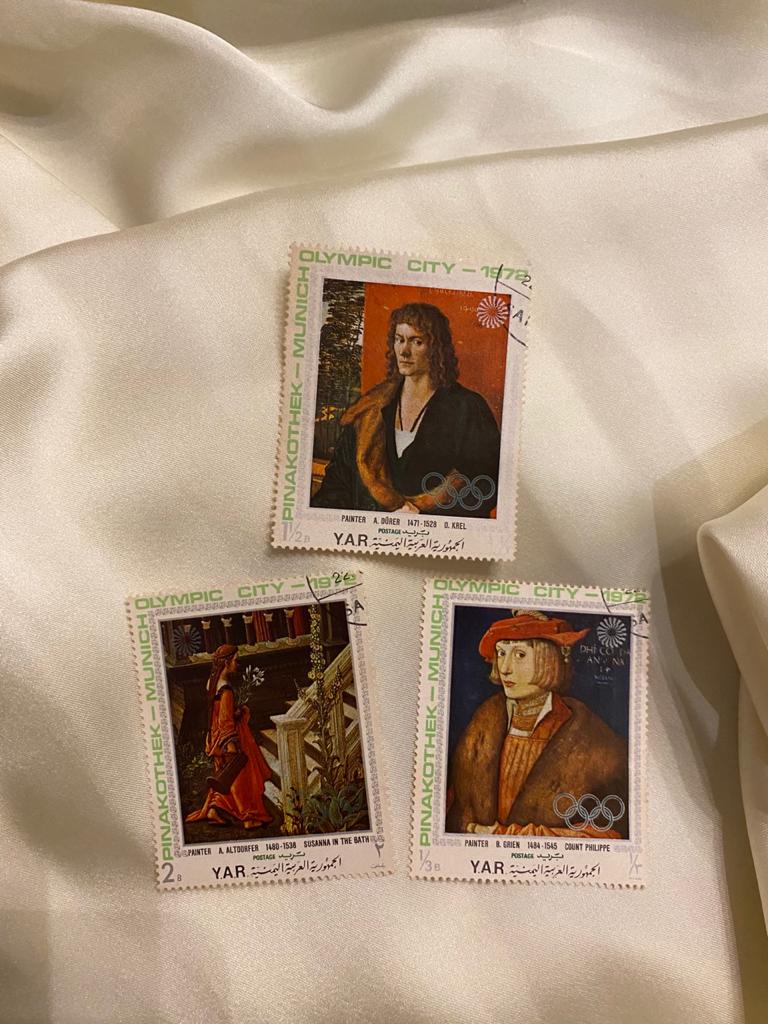
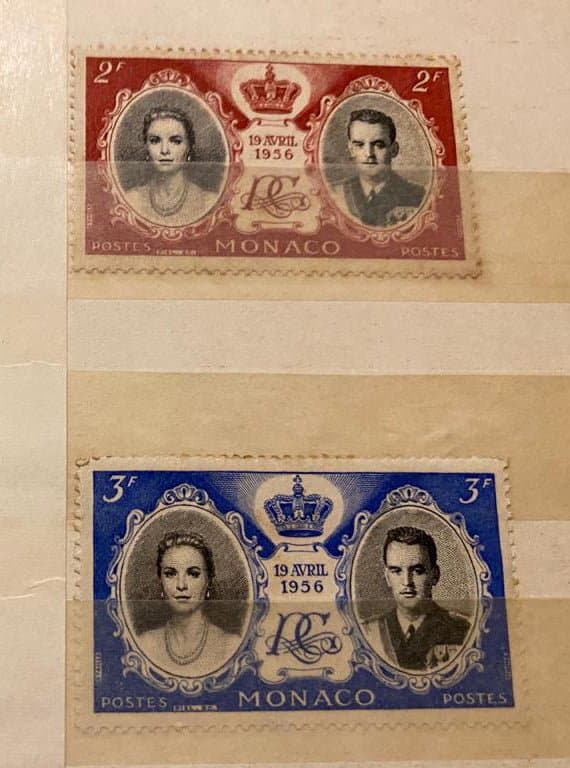
My father’s stamp collecting days were coeval with his maternal grandmother, Begum Aizaz Rasul’s (known as Mummy by her children and grandchildren) days in office as India’s Minister for Social Welfare and Minorities. Other than being a recipient of the prestigious Padma Bhushan Award for her social work, the first-ever woman in the world to lead an opposition in Parliament or being the only Muslim woman in the Constituent Assembly of India, she also belonged to the ruling family of Malerkotla, one of the oldest Princely States in Punjab. Malerkotla was a bastion of diversity for Hindus, Muslims and Sikhs who lived harmoniously in a tolerant, multi-religious and all-inclusive society. Mummy had in her possession a revenue stamp (not to be confused with postage stamp) of one of her ancestors, Nawab Sher Mohammed Khan, a Malerkotla ruler who makes for a compelling character from India’s rich pre-colonial past.
In the 17th century, when Mughal Emperor Aurangzeb ordered the two sons of Guru Gobind Singh, the tenth Sikh Guru, at the tender age of seven and nine to be bricked alive, it was only the Nawab of Malerkotla, Nawab Sher Mohammed Khan who excoriated the Emperors decision and protested by writing a letter to him, denouncing Aurangzeb’s despotic brand of Imperial polity and decrying the whole performance as ‘Un-Islamic’. This is the background behind why Sikh communities in India, to this day revere the Malerkotla family. The family’s name is also inscribed in the Guru Granth Sahib, as a display of respect and solidarity.
The brick-red stamp of Nawab Sher Mohammed Khan, was the final addition to my father’s compendium of stamps. It was assigned the last slot in the eighth album, and just like the rest of his stamp books, found a resting place in the first drawer of his nightstand when he came home from his boarding school for the weekends.
The weekends went by swiftly and were often spent playing cricket with his brothers and neighbours in their front lawn. A neighbour who was also a fellow-philatelist came around often and would show my father his stamps as Baba did the same. This neighbour was well aware of where my father ‘hid’ his stamps and found an appropriate time to nick two of Baba’s most precious albums, one of them containing the solitary stamp of Malekotla’s hero, Sher Mohammed Khan. It took place at a time when Lahore was experiencing a typical monsoon downpour in August and each member of the neighbourhood’s cricket club was going home as cricket in this weather wouldn’t be as fun. The philatelist neighbour, sped home and no one knew exactly why. That is when my father noticed that his favourite albums were missing. He made every effort to retrieve them, but to no avail.
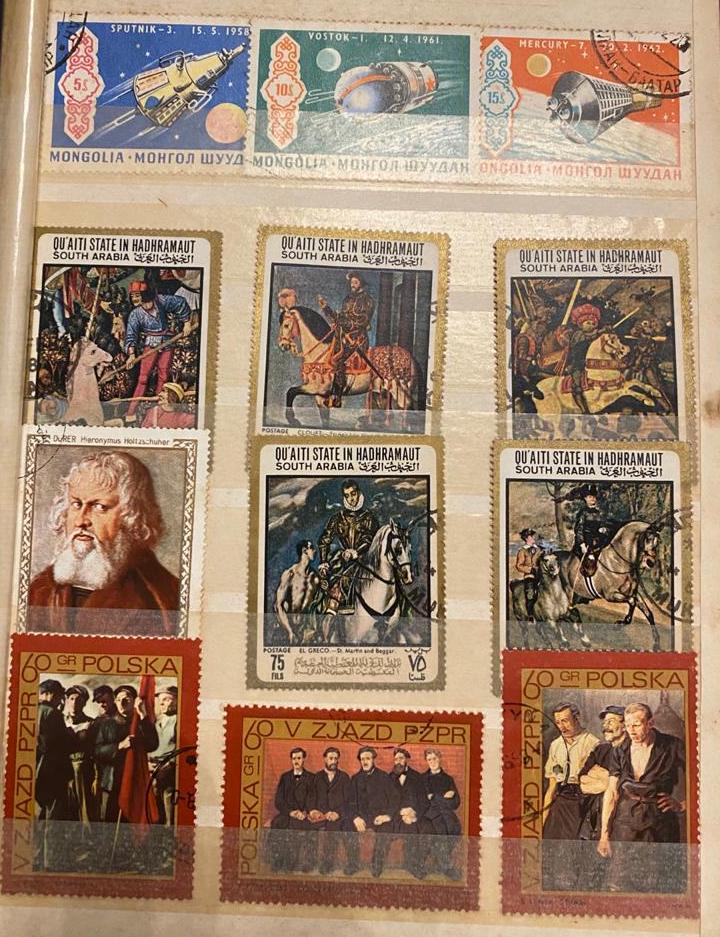

The whole episode incarnated all the abstractions of betrayal and larceny into a harrowing scene of heartbreak and a childhood, bludgeoned. From this point on, my father capitulated and withdrew from the practise of collecting stamps altogether. 1972 was the year that concluded Baba’s philatelic journey and even the mention of his stamps would further catalyse the acrimony that was already at hand.
It was only after 50 years, at my behest, that my father was able to draw out his leather-bound albums from the archives, that childish spark illuminating his eyes and an excitement palpable in his voice; Baba begins to narrate the stories of his stamps, on the muted sofa of our living room…

Pure delight reading this wonderful article!